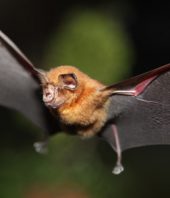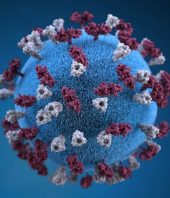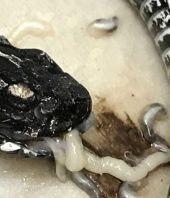Your mother may have given you her eyes, but she could have also given you mitochondrial DNA that carries disease-causing mutations. A study in mice shows that two techniques can drastically reduce the amount of this potentially harmful DNA in eggs and embryos, thus potentially sparing children from the illnesses. The methods could provide alternatives to a controversial mitochondrial replacement procedure that would result in so-called three-parent embryos.
Although researchers have not yet tested the method in human embryos, the work “is unprecedented,” says molecular biologist Mikhail Alexeyev of the University of South Alabama in Mobile, who wasn’t connected to the study. “It’s the first time this has been done in an embryo.”
Mitochondria produce the energy that powers cells. The organelles carry their own DNA, separate from the nuclear DNA that contains most of the cell’s genes. That’s not their only quirk. You inherit your mitochondrial DNA from your mother, because an embryo retains only the mitochondria that came from the egg, not the sperm. However, about one in 200 women carry defective mitochondrial DNA, and their children can develop serious or fatal diseases such as cyclic vomiting syndrome, which results in bouts of nausea and fatigue, and Leigh syndrome, in which babies gradually lose muscle strength and control.
Mitochondrial diseases are rare, but they are untreatable so far. Researchers are consequently developing several ways to jettison faulty mitochondrial DNA or prevent its transmission to offspring if doctors know the mom carries defects in these organelles. One technique, mitochondrial DNA replacement therapy, involves transferring the mother’s nuclear DNA from one of her eggs into the egg of a woman who has normal mitochondrial DNA. The recipient egg is then fertilized and implanted into the mother. However, the technique stirred up controversy. Some scientists question its safety, and ethicists objected because any baby produced would contain DNA from three people. Earlier this year,the United Kingdom approved the procedure for patients, and the Food and Drug Administration is considering whether to allow it in the United States.
Instead of swapping bad mitochondria for good ones, a team led by developmental biologist Juan Carlos Izpisua Belmonte of the Salk Institute for Biological Studies in San Diego, California, decided to alter transmission of the organelles’ DNA. The researchers first tested an RNA strand that carries the instructions for making a DNA-snipping enzyme and an address segment that directs it to mitochondria. Inserting the strand into cells spurs their mitochondria to produce the enzyme, known as a restriction endonuclease, which cuts faulty mitochondrial DNA and leads to its destruction.
Izpisua Belmonte and colleagues injected the RNA into the eggs and early embryos of mice that harbor two varieties of mitochondrial DNA, making them a suitable model for testing the reduction of a disease mutation. The enzyme slices one variety but leaves the other intact. The technique slashed the abundance of the targeted mitochondrial DNA variety in eggs and embryos, the researchers report today in Cell. To determine whether the method harmed the embryos, the researchers implanted some of them into female mice. The animals gave birth to healthy pups, which also produced normal young.
In this experiment, both kinds of mitochondrial DNA were normal. But the results illustrate that it’s possible to diminish transmission of one mitochondrial DNA variety to the next generation.
The restriction endonuclease technique would have limited use, the researchers note, because it would work against only one mutation that occurs in two mitochondrial diseases. So they turned to a second DNA-targeting technique, known as TALENs, that entails inducing cells to produce enzymes that work together like a pair of scissors to cut DNA. Researchers can customize these molecular shears to slice any mitochondrial DNA sequences they want.
When the team injected RNA for the TALENs enzymes into mouse eggs that contained two varieties of mitochondrial DNA, it similarly reduced the levels of one type. To measure whether the technique could diminish disease-causing mitochondrial mutations, the researchers created hybrid cells by fusing mouse eggs to human cells that harbor either of two disease-causing defects. The team showed that the TALENs technique drastically reduced the amounts of faulty DNA in the hybrid cells.
Fertility clinics already have the expertise to perform both RNA-injection procedures, Izpisua Belmonte says. Although neither technique eliminated the targeted DNA from eggs or embryos, that probably isn’t necessary, he says. Most people typically carry a mixture of mitochondrial DNA varieties, and illness results when the proportion of “bad” mitochondrial DNA falls between 60% and 95%. “We want to decrease it to below the level for the diseases to appear,” says Alejandro Ocampo, a postdoc in Izpisua Belmonte’s lab and co-author on the paper.
Cell and molecular biologist Giovanni Manfredi of the Weill Cornell Medical College in New York City gives the study high marks. “They can drop the amount of mutant DNA significantly to levels that … the likelihood of having a disease is virtually zero.” He predicts that the techniques won’t draw the ethical objections of mitochondrial DNA replacement therapy because “the mitochondrial DNA remains that of the mother.”
Izpisua Belmonte and colleagues are already testing whether the techniques will work and are safe in human eggs and embryos discarded by fertility clinics.
Source: AAAS, Full Article






